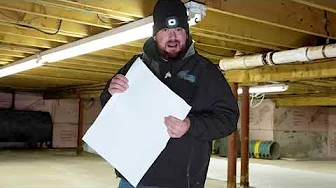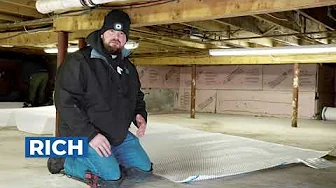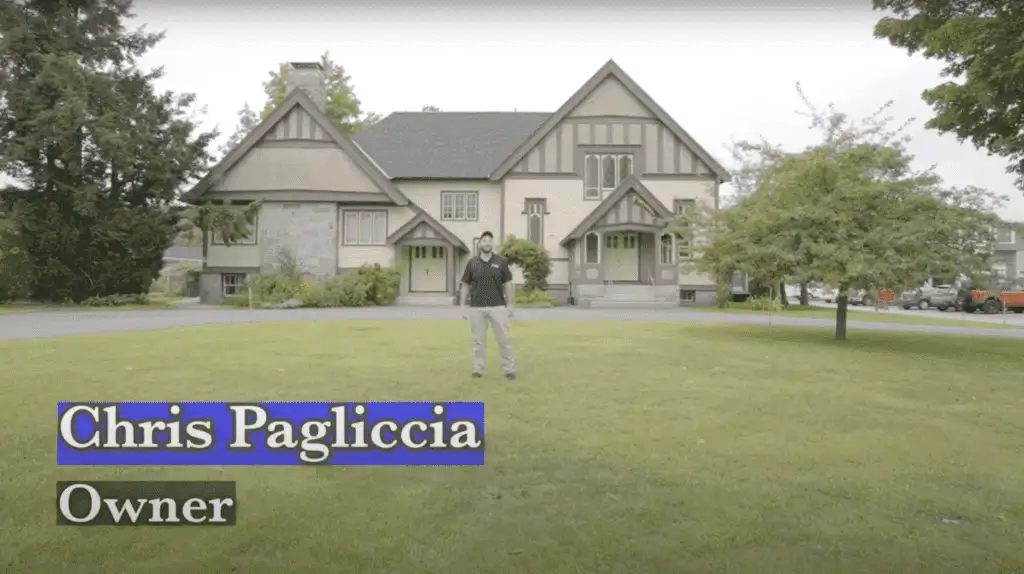Foundation Crack Repair Carlisle MA
Cracks in your foundation are not something to ignore. They can indicate deeper structural issues and create pathways for water and pests to invade your home. For homeowners in Carlisle, MA, where seasonal changes can stress foundations, staying ahead of repairs is essential for protecting your property and ensuring long-term stability.
Real People - Real Great Results
Crawl Space Video Playlist
Why Foundation Cracks Happen
Cracks in your foundation don’t just appear out of nowhere; they’re signals—sometimes subtle, sometimes glaring—that something is shifting beneath your feet. In Carlisle, MA, a mix of natural forces and structural realities often sets the stage for these issues. Here’s what’s going on:
- Soil Movement: The ground beneath your home is always in motion, even if you don’t see it. In regions like Carlisle, where seasonal variations are sharp, the soil goes through cycles of expansion and contraction. After a heavy rain, soil swells with moisture. During a dry spell, it shrinks back. This push-pull routine creates stress on your foundation, eventually leading to cracks. Clay-heavy soils, in particular, are troublemakers in this scenario.
- Water Damage: Water is relentless—and it doesn’t care about your foundation. Improper grading, clogged gutters, or just a series of torrential downpours can saturate the soil. As that soil starts pressing up against your foundation walls, cracks emerge. If water finds its way into those cracks, it’s not just a structural issue anymore—it’s an open doorway for leaks, mold, or worse.
- Settling of the Structure: Your house isn’t as stationary as it seems. Over time, all homes settle into the earth they’re built on. The problem arises when that settling happens unevenly. One corner might dip slightly lower than the others, and when that happens, guess who pays the price? Your foundation. Cracks appear as the concrete adjusts to the shifting weight above it.
- Temperature Swings: In Carlisle, the weather doesn’t do favors for foundations. Winter freeze-thaw cycles pit your foundation against one of nature’s most destructive forces: expanding water. When temperatures drop, water inside tiny pores of the concrete freezes and expands, widening existing cracks or creating new ones. By spring, your foundation has seen its share of stress, and the cracks are proof.
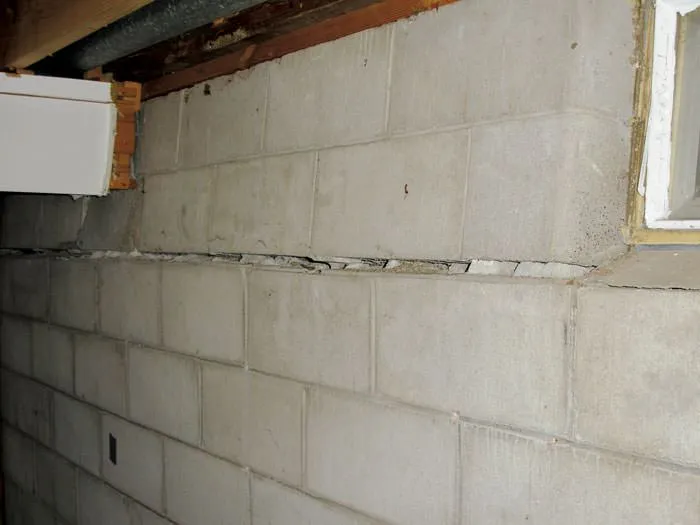
Foundation cracks aren’t just cosmetic annoyances; they’re telling you a story about what’s happening beneath and around your home. Figuring out why they’re appearing is priority number one because without understanding the cause, any repair is just a Band-Aid on a bigger problem.
Types of Foundation Cracks
Cracks in your foundation aren’t created equal—they run the gamut from harmless nuisances to glaring red flags. Understanding the different types helps you gauge what your next move should be, whether that’s grabbing a sealant at the hardware store or calling in the cavalry.
- Vertical Cracks: These guys are the least intimidating of the bunch. They usually show up due to natural settling as your home ages. Picture your house shifting lazily into its slippers—not exactly ideal, but not urgent either. That said, even low-key vertical cracks need sealing, unless you enjoy water sneaking into your basement or frost making mischief in the winter.
- Horizontal Cracks: Now, this is where things get dicey. Horizontal cracks don’t happen because your house is taking a casual stretch—they’re typically caused by soil pressure pushing against your foundation walls, often after heavy rainfall or poor drainage near the house. These can indicate structural strain, and ignoring them is a one-way ticket to bowing walls or worse. Get these inspected, pronto.
- Diagonal Cracks: Uneven settling is the main culprit here, thanks to one side of your house moving more than the other. Think of it as your foundation trying and failing to execute a graceful split. Diagonal cracks can range from no big deal to you-shouldn’t-sleep-on-this territory, depending on their width and whether they’re growing.
- Hairline Cracks: Don’t let the word “hairline” fool you into thinking these can’t become headaches. While they’re often surface-level and chalked up to concrete curing or minor stress, ignoring them over time can allow moisture to weasel its way in. Small? Sure. Harmless? Not forever.
Each type of crack tells a different story about what’s happening beneath your home—don’t ignore the clues. Identifying the crack type is your first step to figuring out just how much attention (and money) it may demand.
Signs You Need Foundation Crack Repair in Carlisle, MA
Foundation issues don’t appear overnight, but they do leave calling cards. These signs might start off subtle, but ignoring them can lead to costly repairs down the road. Here’s what you need to look out for:
- Visible Cracks: Not all cracks are created equal, but any crack in your foundation, whether on interior or exterior walls, is a red flag. Vertical hairline cracks might seem harmless, but even these can let water seep in, and larger horizontal or diagonal cracks can point to more serious structural concerns.
- Water Leaks: If your basement feels damp or you notice puddles after heavy rain, you’ve got yourself a problem. Water entering through foundation cracks not only damages your home’s interior but also weakens the foundation over time.
- Uneven Floors or Sticking Doors and Windows: If you feel like you’re living in a funhouse every time you walk across a room, your foundation may be shifting. Doors that won’t close properly or windows that stick when you try to open them are often the first indicators of this.
- Bowing Walls or Widening Cracks: These are danger-zone symptoms, signaling that soil pressure or structural instability is actively getting worse. These issues require immediate professional intervention to prevent significant damage or collapse.
If you spot any of these warning signs in your Carlisle, MA home, don’t brush them off. The sooner you act, the easier—and more affordable—it’ll be to solve the issue before it spirals into a bigger headache.
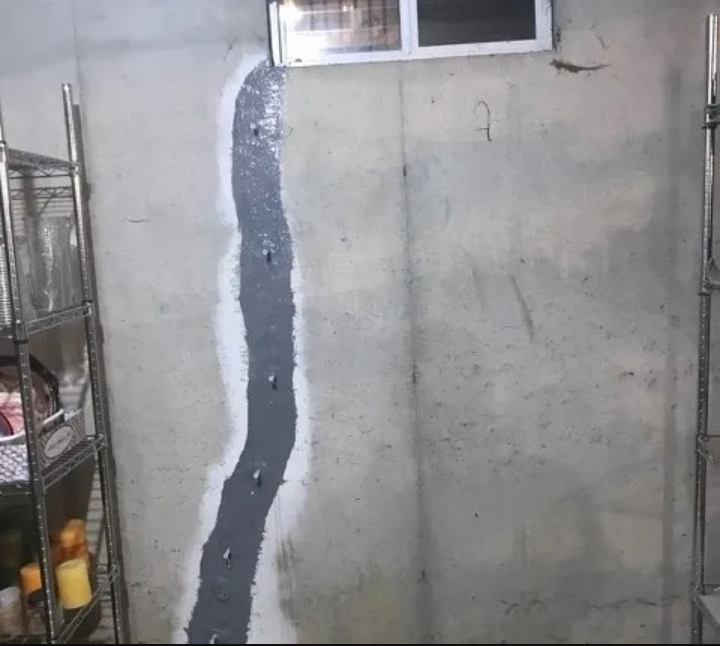
Each method has its place, and often, they’re used in combination to provide both immediate fixes and long-term protection. Cutting corners here can lead to bigger problems later, so matching the repair to the problem is critical for peace of mind and a stable home.
Common Foundation Crack Repair Methods
Not all foundation cracks are created equal, and neither are the methods used to fix them. Different cracks call for different solutions, and understanding the tools available can make the difference between a quick patch or a long-term fix. Here’s a breakdown of the most common repair methods and where they shine.
- Epoxy or Polyurethane Injections: Think of this as the “quick fix” solution for non-structural cracks. These injections involve filling the crack with a durable, waterproof material that prevents water intrusion and slows further erosion. They’re ideal for vertical or hairline cracks caused by settlement, but that’s where their usefulness ends. If the crack comes with bowing walls, uneven settling, or other structural issues, injections won’t solve the root problem. They’re a Band-Aid, not a cure.
- Carbon Fiber Reinforcements: When you need brute strength, carbon fiber straps step up. These are used to reinforce walls affected by horizontal cracks, often caused by soil pressure pushing from the outside. Essentially, carbon fiber reinforces the foundation, keeping it from bowing, and stops the cracks from spreading. Think of it as putting your foundation into a high-strength exoskeleton. The process is straightforward, minimally invasive, and doesn’t require heavy equipment.
- Helical or Push Piers: For serious issues like sinking or uneven foundations, this is the heavyweight solution. Helical or push piers are like giant screws or posts that are driven deep into stable soil or bedrock, bypassing the unstable top layers. They transfer the load of your home to solid ground, leveling the foundation and preventing future settling. These are not DIY territory. This repair requires a professional with both the tools and expertise to ensure proper installation and stability.
- Grading and Drainage Improvements: Sometimes, the best offense is a good defense. If your foundation issues stem from poor water management (which is common in Carlisle, MA), grading and drainage work can save you a world of headaches. By reshaping the land around your home or improving your gutter and downspout system, you manage runoff effectively. Think of it as taking pressure off your foundation before it even becomes a problem. Bonus: it reduces the likelihood of new cracks forming in the first place.
DIY vs. Professional Repair
So, you’ve spotted a crack in your foundation. What now? The choice between a DIY fix and hiring a professional hinges on two things: the crack’s severity and your comfort level with tools that aren’t always forgiving.
DIY Repairs
If you’re looking at a small, non-structural crack—the kind you can slip a credit card into, but not much else—DIY might be an option. Polyurethane or epoxy injection kits are available at hardware stores, offering a straightforward way to seal the crack and block moisture. It’s not rocket science: you clean the area, inject the sealant, and let it cure. Just don’t fool yourself into thinking it’s permanent. DIY repairs are like putting a band-aid on a problem—it works, but you’re not solving bigger issues like soil movement or pressure buildup.
When you go the DIY route, precision is critical. If you skimp on prep work, you’ll end up with an ineffective repair or a crack that reopens as soon as the seasons shift. And remember: structural cracks or cracks wider than about 1/8 inch? Walk away. Those are not weekend projects.
Professional Repairs
If the crack is horizontal, spans multiple feet, or comes with bonus issues like bowing walls or water leaks, call in the pros. Foundation specialists don’t just patch cracks—they dig into the root cause. Is your foundation shifting? Is water pooling somewhere it shouldn’t? A professional will address these questions with tools and expertise that a caulk gun simply can’t compete with. Experts also bring heavier repair artillery, like carbon fiber straps for reinforcing compromised walls or installing helical piers to counteract settling foundations.
These aren’t solutions you can YouTube your way through, and attempting to do so could result in botched repairs or even more damage. Here’s the hard truth: professional repairs aren’t cheap. However, if you’re dealing with structural issues, throwing money at quick DIY fixes will only delay the inevitable. It’s better to swallow the upfront cost than face far bigger problems—and bills—down the road.

The Rule of Thumb
For Carlisle homeowners, knowing when to DIY and when to bring in reinforcements is crucial. Hairline cracks? Grab a kit and give it a shot. Anything wider, horizontal, or suspicious? It’s time to call the experts. Your foundation deserves more than guesswork.
Preventing Future Foundation Cracks
The best way to deal with foundation cracks? Don’t let them happen in the first place. While you can’t control every factor, a few straightforward measures can significantly reduce the risk of seeing those pesky cracks appear in your Carlisle home.
- Maintain Proper Drainage: Water is one of the biggest threats to your foundation. Start by keeping your gutters and downspouts in check. Clear them regularly, especially after the fall foliage dumps its annual load. Make sure water is directed at least 5 to 10 feet away from your foundation—extensions on downspouts are cheap insurance against water pooling where it shouldn’t.
- Grade the Landscape: Your yard isn’t just for curb appeal. Proper grading—sloping the ground away from your home—helps steer rainwater away from your foundation. If you notice puddles sticking around after a storm, it’s time to break out a shovel or talk to a landscaper.
- Monitor Vegetation: While a giant oak tree might shade your yard beautifully in the summer, its roots could be wreaking havoc underground. Trees and shrubs planted too close to your home absorb water from the soil, leading to uneven moisture levels. Keep greenery maintained and spaced a safe distance from the foundation to avoid trouble.
- Seal Cracks Early: Found a tiny crack in your basement wall? Don’t just shrug it off. Sealing those hairline cracks with an epoxy or polyurethane injection kit stops water from sneaking in and prevents them from turning into bigger, costlier problems. Think of it as putting a patch on a tire before the slow leak becomes a nail in your weekend plans.
Simple as these steps may seem, they pack a punch against future foundation headaches. Remember, a little effort upfront beats shelling out thousands for major repairs later.
Why Carlisle MA Homes Are at Risk
Carlisle, MA isn’t just a postcard-worthy New England town; it’s also a prime candidate for foundation headaches. The region’s climate guarantees it. Winters are sharp and punishing, with freezing temperatures that drive frost deep into the ground. That soil? It doesn’t just sit still. It freezes, expands, and repeats the cycle until something gives—often, it’s your foundation.
Come spring, things don’t exactly improve. Heavy rains saturate the already-shifting soil, adding weight and pressure against foundation walls. If your home doesn’t have a robust drainage system (hint: many older Carlisle homes don’t), the water hangs around, seeping in and wreaking havoc. Throw in the fact that much of Carlisle’s housing is built on mixed or less-than-ideal soil types, and you’ve got a perfect recipe for cracks to show up uninvited.
It’s not just age or weather, either. Many Carlisle houses were designed with charm in mind, not always durability. Modern construction codes are kinder to foundations, but older homes? They bear the brunt of every freeze-thaw, every storm, every shift underground. For homeowners here, staying watchful is not optional. It’s survival.
When To Call a Professional in Carlisle MA
Foundation repairs are not a “wait-and-see” kind of problem. If you’re dealing with horizontal cracks, cracks wider than 1/4 inch, or signs like bowing walls or persistent water leaks, it’s time to bring in the experts. These are often symptoms of structural problems that a tube of epoxy from the hardware store won’t fix.
In Carlisle, MA, the combination of harsh winters and wet springs poses unique challenges. Freeze-thaw cycles, heavy rainfall, and clay-heavy soil can all amplify foundation stress. Professionals have the tools and training to assess these conditions and stabilize your foundation before the problem escalates.
Even if you’re uncertain about the severity of an issue, getting a professional opinion is worth the peace of mind. Many contractors offer initial consultations or inspections for free or at a low cost. It’s a small investment compared to what you might face if major repairs become inevitable due to delay. When in doubt, call sooner rather than later.
Conclusion
Foundation cracks are more than cosmetic imperfections—they’re silent messengers warning you of potential structural vulnerabilities. Ignoring them won’t make them go away, but addressing them early can. Whether it’s sealing a hairline crack or stabilizing a bowing wall, every repair adds a layer of insurance to your home’s safety and longevity. For homeowners in Carlisle, MA, vigilance is key. The region’s climate and soil aren’t going to cut your foundation a break, so it’s up to you to stay ahead of potential issues. A little maintenance today beats a big, costly repair tomorrow. Seal it early, fix it right, and sleep easier knowing your home has a solid base—literally.
Reviews from Happy Customers
Our top priority is customer satisfaction, and we work closely with clients to understand their unique needs and goals.




